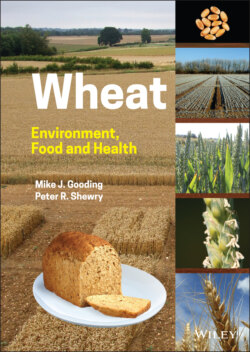Читать книгу Wheat - Peter R. Shewry - Страница 46
1.5.4.6 Measurement of Dough Rheology and Quality
ОглавлениеThe properties of dough and gluten can be measured using rheology, a branch of physics that deals with the deformation and flow of matter. Several mechanical systems have been developed to measure the rheological properties of doughs in research and grain utilization.
These fall broadly into two types. Recording dough mixers, such as the Farinograph, Mixograph, and Reomixer, measure the mechanical energy required to mix a dough to its maximum (peak) resistance. They thus provide data on the peak resistance, the time required to mix to the peak (both measures of dough strength), and the breakdown of the dough when overmixed (a measure of stability). The second type of system, such as the Extensograph, Alveograph, and Kieffer Rig, measures the properties (resistance and extensibility) of the dough after it has been mixed to peak resistance and allowed to rest, by extending the dough until it breaks. However, these mechanical systems are low throughput and clearly not appropriate for the analysis of large numbers of samples in breeding programmes.
Several simpler systems are therefore widely used, by breeders as well as in the food industry. For example, in the SDS‐sedimentation volume test, wholemeal flour is mixed with weak lactic acid and sodium dodecyl sulphate (SDS) in a measuring cylinder. This solution dissolves much of the protein but not the high molecular weight proteins, particularly the glutenins, which are a major contributor to the volume of suspended sediment recorded after a period of settling (Fullington et al. 1987).
Solvent retention capacity (SRC) determines the ability of flour to retain a set of four solvents (water, 50% sucrose, 5% sodium carbonate, 5% lactic acid) (Slade and Levine 1994). Because these solvents are preferentially absorbed by one or more of the major grain components (glutenin [lactic acid], starch [sodium carbonate and sucrose], and pentosans [sucrose]), their relative retention can be used to predict aspects of grain composition and quality. The relative retention is expressed as the gluten performance index (GPI), which is calculated as:
(1.1)
The GPI has been reported to explain the performance of glutenin in dough development (Kweon et al. 2011).
